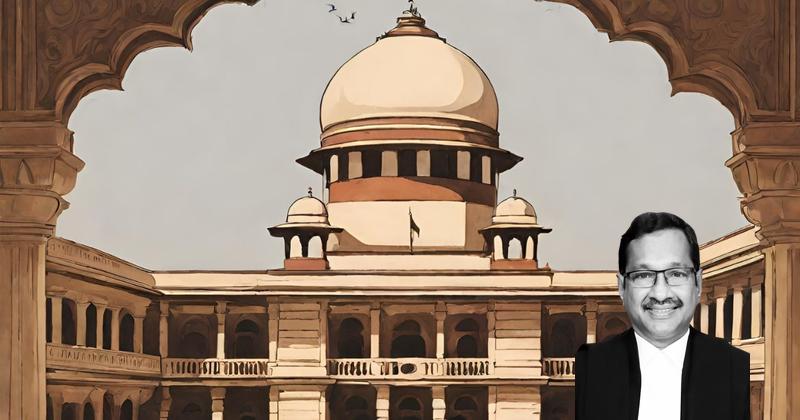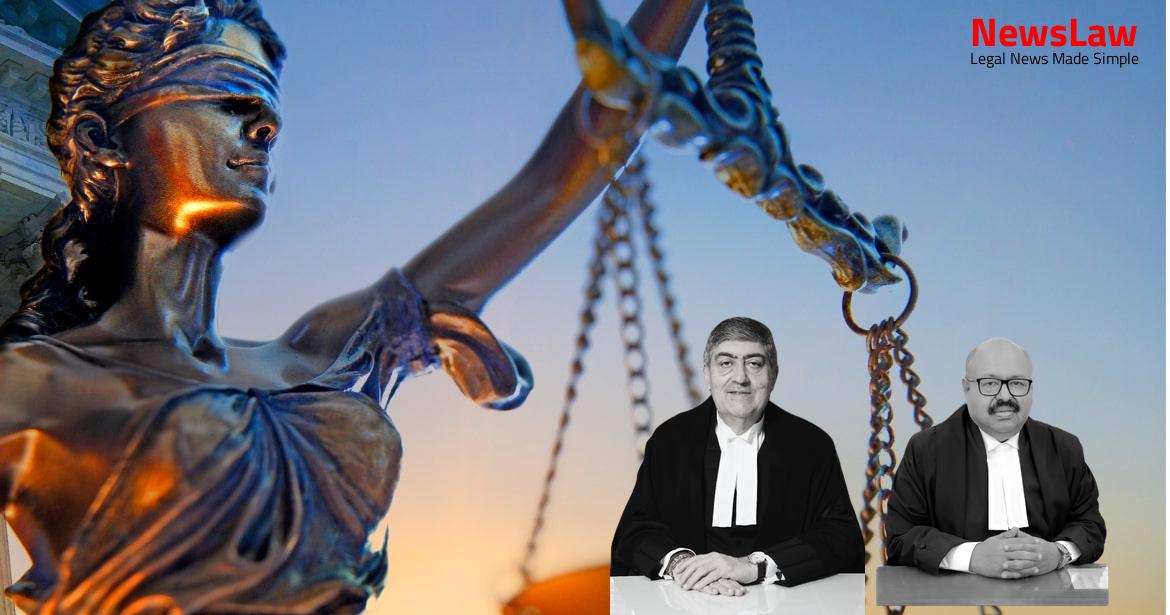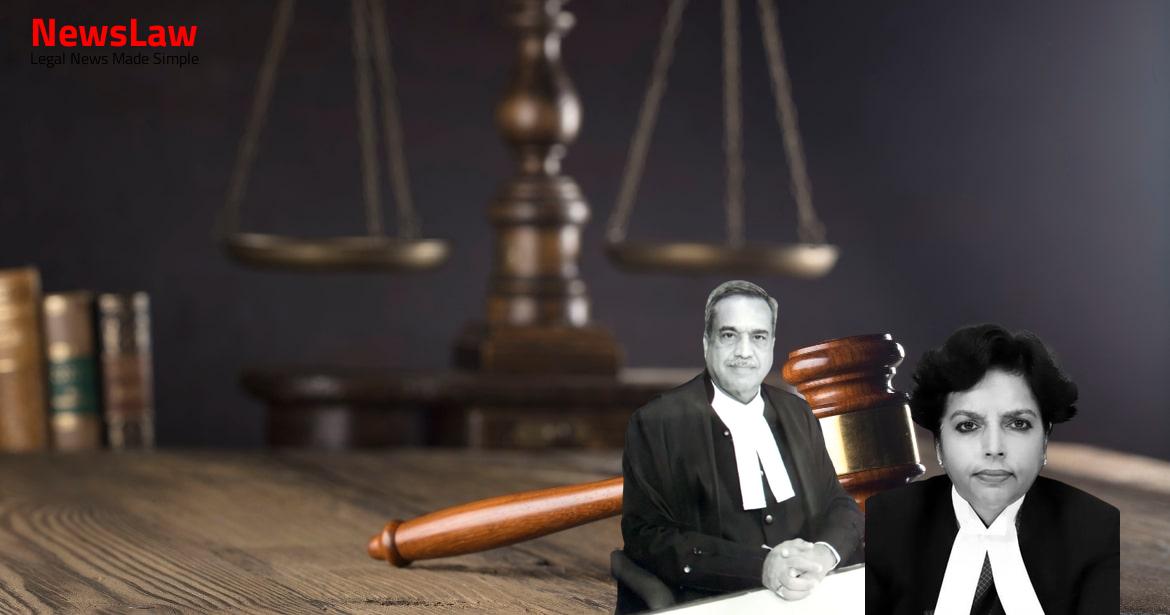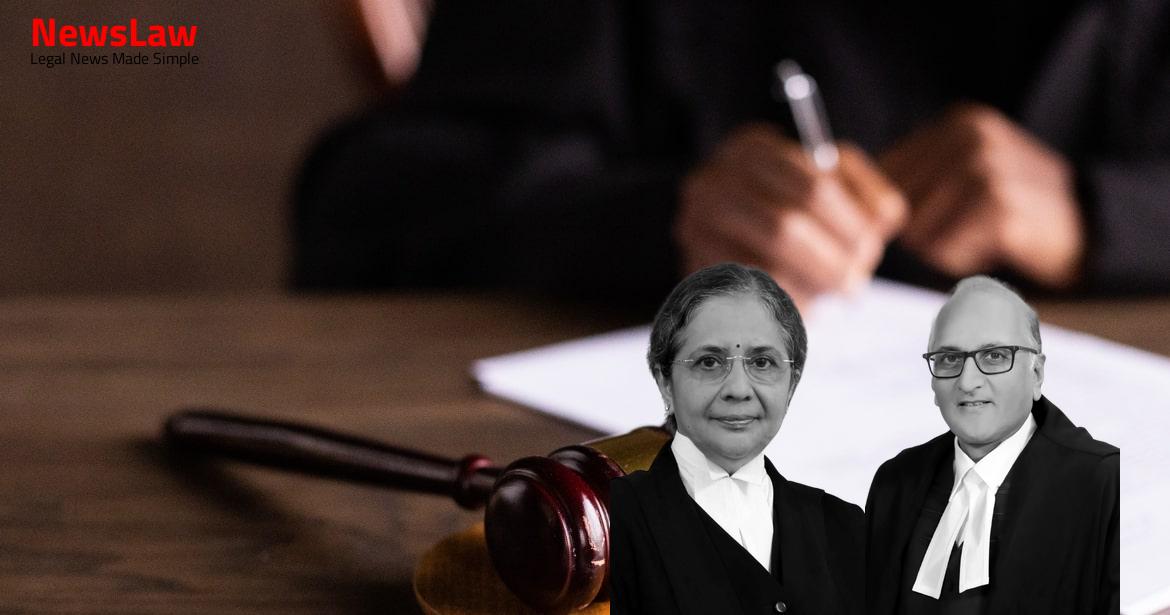This appeal, by special leave, is at the instance of a convict accused and is directed against the judgment and order dated 28.02.2014 passed by the High Court of Delhi in Criminal Appeal No 1246 of 2011 by which the High Court dismissed the appeal and thereby affirmed the judgment and order of conviction dated 08.04.2011 and the order on sentence of life imprisonment dated 27.04.2011 resply passed by the Additional Sessions Judge-II (North 2 West), Rohini, Delhi in the Sessions Case No 998 of 2009 holding the appellant convict herein guilty for the offences punishable under Sections 302, 392, 394 and 397 resply read with Section 34 of the Indian Penal Code (for short, ‘IPC’). When the PW 1 and his friend Pappu reached near the STD PCO at the D Block corner, they were cornered by the four accused persons who 3 were put to trial. The 186 No FIR of 2008 dated 16.08.2008 reads thus:- “F.I.R. Then, at around 3-30 a.m., when, we both reached at D Block Corner main road Azadpur Mandi, then, four boys, surrounded us and out of them, two boys, took out amount of Rs.14,800/- placed in my pocket. The appellant convict herein came to be arrested on 20.08.2008. However, it is the case of the prosecution that the appellant convict herein declined to participate in the TIP on the ground that he was already shown to the witnesses in the police station. It is also the case of the prosecution that after the arrest of the appellant convict, he made a statement that he would be in a position to show the weapon of offence i.e. He has identified the accused Vijay @ Kalia to be the person, who stabbed him and has also identified accused Mukesh as the person who was armed with ice prick. That they were taken to a private nursing home but the guard at the Nursing Home did not let them enter the same on the pretext of police case and in the meantime, PCR officials reached there and took them to BJRM Hospital.
That at around 3.30 AM he saw that four boys had surrounded his 9 brother Pappu and friend Sushil and one of them had taken out the purse of his brother from his pocket and when his brother objected then the accused Mukesh and Vijay (whom the witness has correctly identified in the court by pointing out towards them but not by name), gave ice prick blow on various parts of his body and the other two accused who had surrounded his brother and Sushil had taken out the money. He has proved his statement recorded during the Test identification Parade of accused Pawan and Vijay which are Ex.PW4/B and Ex.PW4/C respectively. MM Shri Prashant Kumar he had identified accused Sharvan and Mukesh also besides accused Pawan and Vijay to the investigating officer being the said four persons who were involved in the incident.
This witness has proved having conducted the postmortem examination on the dead body of deceased Pappu on 16.8.2008 which report is Ex.PW12/A. Rohit Kumar (PW15) This witness has proved the death certificate of Pappu issued by BJRM hospital which is Ex. PW15/A and Death Summary which is Ex. PW15/B POLICE/OFFICIAL WITNESSES (Proving Investigations) 6. HC Mahender (PW5) He is also a formal witness being the photographer who has proved having taken seven photographs of the place of incident on the direction of the investigating officer the negatives of which are Ex.PW5/A (1 to 7) and the corresponding positive photographs are Ex.PW5/B (1 to 7). He has proved that the sealed pullanda remained intact during his custody and he did not interfere with the same nor allowed anyone to interfere with it.
Ex.PW10/D Arrest memo of accused Vijay @ Kalia Ex.PW10/E Arrest memo of accused Pawan Ex.PW10/F Arrest memo of accused Sharwan Ex.PW10/G Personal search memo of accused Vijay 14 Ex.PW10/H Personal search memo of accused Pawan Ex.PW10/J Personal search memo of accused Sharwan Ex.PW10/K Disclosure statement of accused Vijay Ex.PW10/L Disclosure statement of accused Pawan Ex.PW10/M Disclosure statement of accused Sharwan Ex.PW10/N Pointing out memo Ex.PW10/O Seizure of Purse along with its belonging got recovered by the accused Vijay @ Kalia Ex.PW10/P Sketch of the ice prick got recovered by the accused Vijay @ Kalia Ex.PW10/Q Seizure of the ice prick Ex.PW10/R Arrest memo of accused Mukesh Ex.PW10/S Personal search memo of accused Mukesh Ex.PW10/T Disclosure statement of accused Mukesh Ex.PW10/U Pointing out memo Ex.PW10/V Seizure of currency notes recovered by the accused Mukesh Ex.PW10/W Sketch of the ice prick got recovered by the accused Mukesh 15 Ex.PW10/X Seizure of ice prick got recovered by the accused Apart from the document proved by SI Arvind Pratap he has proved the following documents: Ex.PW13/A-1 to A-7 Photographs of the spot Ex.PW13/B Site plan
Ex.PW13/C Brief Facts Ex.PW13/D Form 25.35 Ex.PW13/E & Ex.PW13/F Dead body identification statement of Pradeep and Bhagwati Ex.PW13/G Request for postmortem Ex.PW13/H Seizure of pullanda containing clothes of the deceased Ex.PW13/J Application for seeking subsequent opinion Ex.PX FSL result (not disputed by the 16 Ld. Thereafter he along with staff reached gate no.2 Azadpur Mandi from where he came to know that the incident had taken place at D- Block Corner near STD booth and thereafter, they reached there and found two persons namely Sushil Kumar and Pappu in injured conditions.
He further stated that he was innocent and had been falsely implicated in the case. The order of sentence as awarded to the appellant convict herein by the Trial Court is reproduced as under:- “The convict Mukesh Singh is sentenced to Rigorous Imprisonment for life and fine for a sum of Rs.25,000/- for the offence under Section 397 read with 302 Indian Penal Code. The appellant convict being aggrieved by the judgment of conviction and order on sentence passed by the Trial Court went in appeal before the High Court of Delhi.
He argued that although the incident occurred at a vegetable market, yet there were no sufficient lights in that area to enable the assailants to easily identify or to put it in other words, the PW 1 as an injured eye witness must not have had the occasion to even have a bare glimpse of the appellant. He argued that PW 1 Sushil Kumar identified the appellant convict herein and other three co-accused for the first time before the Trial Court. In other words, the submission of the learned counsel is that if the identification of the appellant convict for the first time before the Trial Court is eschewed from consideration, 22 then there is no other evidence to connect him with the alleged act. It was argued that once having declined to participate in the TIP, the accused thereafter cannot object or say anything against as regards the evidentiary value of the identification by the eye witnesses of the accused persons before the Trial Court.
Having heard the learned counsel appearing for the parties and having gone through the materials on record, the following questions fall for our consideration:- (i) Whether the High Court committed any error in dismissing the appeal filed by the appellant convict and thereby affirming the judgment and order of conviction and sentence passed by the Trial Court for the alleged offences? (ii) Whether an accused can decline to participate in the TIP on the ground that he was already shown to the eye witnesses prior to the conduct of the TIP and 25 in such circumstances, the TIP would be nothing short of creating evidence against him? Article 20(3) of the Constitution reads thus:- “Article 20(3):No person accused of any offence shall be compelled to be a witness against himself.” 24.
What is prohibited by Article 20(3) of the Constitution is procuring by compulsion of the positive volitional evidentiary acts of an accused. It is true that an accused may be said to be compelled to attend a test identification parade, but this compulsion does not involve any positive volitional evidentiary act. His mere attendance or the exhibition of his body at a test identification parade even 28 though compelled, does not result in any evidentiary act until he is identified by some other agency. But the prohibition of compelling a man in a criminal court to be witness against himself is a prohibition of the use of physical or moral compulsion to extort communications from him, not an exclusion of his body as evidence when it may be material. Satish Chandra, AIR 1954 SC 300, and the statement of the law set out earlier in this judgment furnishes, to my mind, the real test for determining whether any particular accused is compelled to be a witness against himself. Calcutta Motor and Cycle Co., AIR 1958 Cal 682, no formal complaint is necessary and even if a person has been named as one who committed an offence, particularly by officers who are competent to launch a prosecution against him, he has been accused of an offence within the meaning of Article 20(3) and he can claim protection under that provision of law and, therefore, the extortion of any evidentiary material even at the stage of investigation, as in the present case, which may aid in the making out of a case against him may be within the meaning of condemnation of the Article.
A person can be a witness not merely by giving oral evidence but also by producing documents or making intelligible gestures as in the case of a dumb witness or the like. Apart from the question of coercion as opposed to acquiescence the fundamental idea stressed is ‘positive volitional evidentiary act’. The State, AIR 1960 Cal 32, in connection with a case in which the Magistrate allowed an investigating officer to take specimen writing and signatures of the accused. The State, the Orissa High Court seems to have been of the opinion that any direction asking the accused to give his thumb impression would amount to asking him to furnish evidence which is prohibited under Article 20(3). The Madhya Pradesh High Court held that Section 5 of the Madhya Bharat Identification of Prisoners Act, in so far as it conferred powers on the Magistrate to direct an accused person to give his thumb impression, specimen writing and signature for comparison to be used against him in a trial, was repugnant to Article 20(3) of the Constitution and was, therefore, void. Negativing the contention that taking of finger prints is a violation of the privilege against self- incrimination, Willis in Constitutional Law of the United States (1936 Edition, page 522) observed inter alia: 33 “The accused does not exercise a volition or give oral testimony.
Also Read: https://newslaw.in/?p=548
It may be a positive act and even a volitional act, but only to a limited extent, when he walks to the place where the test identification parade is to be held, as has been urged by Mr. Identification of person arrested. Where a person is arrested on a charge of committing an offence and his identification by any other person or persons is considered necessary for the purpose of investigation of such offence, the Court, having jurisdiction may, on the request of the officer in charge of a police station, direct the person so arrested to subject himself to identification by any person or persons in such manner as the Court may deem fit. The said Section empowers the court, on the request of the officer-in-charge of a police station, to direct for placing the accused at test 35 identification parade for identification by any person or persons in such manner as the court may deem fit. Second Proviso : Identification when suspect is mentally or physically disabled. It relates to 36 identification of a suspect who is mentally or physically disabled.
Rajju, AIR 1971 SC 708, this Court observed, “If the accused felt that the witnesses would not be able to identify themthey should have requested for an identification parade.” This observation indirectly approves the right to ask for test 37 parade by the accused. This provision for giving directions by the Court as to the manner in which test parade is to be conducted may be viewed as treating the Court as part of the investigating agency. However, if that evidence can be procured without any positive volitional evidentiary act on the part of the accused, Article 20(3) of the Constitution will have no application. The accused concerned may have a legitimate ground to resist facing the TIP saying that the witnesses had a chance to see him either at the police station or in the Court, as the case may be, however, on such ground alone he cannot refuse to face the TIP. Facts which establish the identity of any person or thing whose identity is relevant are, by virtue of Section 9 of the Evidence Act, always relevant. agreed) said at page 558 : “Identification is an act of the mind, and the primary evidence of what was passing in the mind of a man is his own testimony, where it can be obtained.” 40. During the investigation of a crime committed by persons unknown to the witnesses, the persons arrested on suspicion of their complicity in the crime have got to be confronted by the investigating authority with the witnesses so that they can find out whether they are the persons who committed the crime or not. After due consideration of the aforesaid, this Court summarised the principles as follows:- “43.1 The purpose of conducting a TIP is that persons who claim to have seen the offender at the time of the occurrence identify them from amongst the other individuals without tutoring or aid from any 42 source. 43.2
There is no specific provision either in CrPC or the Evidence Act, 1872 (“the Evidence Act”) which lends statutory authority to an identification parade.
43.8 As a rule of prudence, the court would, generally speaking, look for corroboration of the witness’ identification of the accused in court, in the form of earlier identification proceedings. 43.12 The court of fact may, in the context and circumstances of each case, determine whether an adverse inference should be drawn against the accused for refusing to participate in a TIP. Hence, in this backdrop, a refusal to undergo a TIP assumes secondary importance, if at all, and cannot survive independently in the absence of it being a substantive piece of evidence.” [Emphasis supplied] 45. In other words, the main object of holding an identification parade, during the investigation stage, is to test the memory of the witnesses based upon first impression and also to enable the prosecution to decide whether all or any of them could be cited as eyewitnesses of the crime. It is, accordingly, considered a safe rule of prudence to generally look for corroboration of the sworn testimony of witnesses in court as to the identity of the accused who are strangers to them, in the form of earlier identification proceedings. Failure to hold a test identification parade would not make inadmissible the evidence of identification in court. In that case the evidence of the witness in the Court and his identifying the accused only in the Court without previous identification parade was found to be a valueless exercise. Lekh Raj [(2000) 1 SCC 247 : 2000 SCC (Cri) 147 : AIR 1999 SC 3916] had not considered the aforesaid three-Judge Bench decisions of this Court.
On the other hand, it was argued on behalf of the prosecution that the substantive evidence is the evidence of identification in Court and, therefore, the value to be attached to such identification depends on facts and circumstances of each case. It is accordingly considered a safe rule of prudence to generally look for corroboration of the sworn testimony of witnesses in court as to the identity of the accused who are strangers to them, in the form of earlier identification proceedings. It is well settled that the substantive evidence is the evidence of identification in court and the test identification 49 parade provides corroboration to the identification of the witness in court, if required. In my considered view, it was not open to the accused to refuse to participate in the TI parade nor was it a correct legal approach for the prosecution to accept refusal of the accused to participate in the test identification parade.
State (NCT of Delhi), (2003) 10 SCC 599, this Court took the view that if an accused himself refused to participate in the TIP, then it is not open to him to contend that the statement of the witnesses made for the first time should not be relied upon. However, in a case where the accused himself declines to participate in a test identification parade, the prosecution has no option but to proceed in a normal manner like all other cases and rely upon the testimony of the witnesses, which is recorded in court during the course of the trial of the case.” [Emphasis supplied] It is relevant to note that in the aforesaid decision, the accused in his statement under Section 313 CrPC had not stated that he had been shown to the witnesses at the police station. Manda Sahani in her examination- in-chief stated that on the place of the incident, there was no light. in the month of February, 1992, it would not be safe to conclude that there was sufficient light on the place of the incident enabling Manda Sahani to identify the appellant.” 54. parade under Section 9 of the Evidence Act is to test the veracity of the witness on the question of his capability to identify an unknown person whom the witness may have seen only once.
Therefore to say that a photo identification is hit by Section 162 is wrong. The logic behind TIP, which will include photo identification lies in the fact that it is only an aid to investigation, where an accused is not known to the witnesses, the IO conducts a TIP to ensure that he has got the right person as an accused. [(1971) 2 SCC 75 : 1971 SCC (Cri) 391] identification tests do not constitute substantive evidence. In other words, the main object of holding an identification parade, during the investigation stage, is to test the memory of the witnesses based upon first impression and also to enable the prosecution to decide whether all or any of them could be cited as eyewitnesses of the crime.
It is trite to say that the substantive evidence is the evidence of identification in court. Failure to hold a test identification parade would not make inadmissible the evidence of identification in court. State of J&K [(1975) 4 SCC 480 : 1975 SCC (Cri) 545], though a test identification parade was not held, this Court upheld the conviction on the basis of the identification in court corroborated by other circumstantial evidence. In view of this corroborative evidence we find no substance in the argument urged on behalf of the appellant that the investigating officer ought to have held an identification parade and that the failure of Munshi Ram to mention the names of the two accused to the neighbours who came to the scene immediately after the occurrence shows that his story cannot be true. On 30.08.2008, upon instructions of the IO, the PW 11 SI Kishan Lal, moved an application before the MM, Shri Prashant Kumar for fixing the TIP of the appellant convict along with co-accused Vijay, Pawan Kumar and Sharwan Kumar. On 02.09.2008 the MM/PW-16 conducted the TIP proceedings where co-accused Vijay and Pawan Kumar were to be identified by PW 1 and the appellant convict was to be identified by PW 4. On 03.09.2008, PW 16 conducted TIP of co-accused Sharwan Kumar, to be identified by PW 1 and PW 4 resply wherein, the co-accused Sharwan Kumar refused to participate. Remarkably, while the co-accused; Vijay and Pawan Kumar initially participated in the TIP on 20.08.2008, but thereafter all the accused persons including the appellant convict herein refused to participate in the TIP.
The PW 1 Sushil Kumar in his examination in chief has stated thus:- 60 “I had identified the accused persons on 15.9.2008 in the Rohini Court Complex, when the accused persons were produced in the same Court.” 67.
Also Read: https://newslaw.in/?p=554
When the PW 11 says that the witnesses were able to identify all the four accused at the time when they were produced in the court for taking them into judicial custody, the same should be understood as conveying that as an investigating officer, he took a chance to get the accused persons identified through the 61 witnesses. The State further says that the PW 1 being an injured eye witness had an opportunity of having more than a fair glimpse of the four accused persons including the appellant convict and, therefore, irrespective of the fact that the PW 1 had an opportunity to see the appellant convict on 15.09.2008 at the Rohini Court Complex, the identification before the Trial Court should be accepted. Considering the nature of injuries suffered by the PW 1 and the deceased and the fact that the PW 1 and the deceased were cornered by the 63 accused persons and further that they were robbed of their money, the entire incident could certainly have afforded sufficient time and opportunity to the PW 1 to recall and identify the assailants including the appellant convict herein. However, in a case where the accused himself declines to participate in a TIP, the prosecution has no option but to proceed in a normal manner like all other cases and rely upon the testimony of the witnesses, which is recorded in Court during the course 64 of the trial of the case. 188 (1972), it held that reliability is the linchpin in determining the admissibility of identification testimony and the factors to be considered are: the opportunity of the witness to view the criminal at the time of the crime; the witness’ degree of attention; the accuracy of his prior 65 description of the criminal; the level of certainty demonstrated at the confrontation, and the time between the crime and the confrontation. One of the contentions raised by counsel for the appellant Vijay was that there were no sufficient lights at the place of incident and this is apparent from the fact that in the site plan proved on record as Ex. With such clear stand taken by PW- 1 that there was sufficient street light to see the faces of the assailants, we find no merit in the said 66 contention raised by counsel for the appellant Vijay. Counsel also justified the refusal of the appellants to participate in the Test Identification Parade conducted on 02.09.08 because of they being already shown to PW-1 by the police. It would be therefore seen that right from the first statement, the stand of PW-1 had been that he can identify the assailants and in fact he had identified them when they were also present at the time of his deposition in court. Learned counsel for the appellant – Mukesh was quite emphatic in his contention that PW-1 in his cross examination admitted the fact that he had clearly seen the face of one assailant, who stabbed him and this deposition of PW-1 clearly meant that he was stabbed by the assailant to whom he described as person with dark complexion having a cut mark on his face and therefore, Mukesh had no role in the commission of the said crime.
Case Title: MUKESH SINGH Vs. THE STATE (NCT OF DELHI)
Case Number: Crl.A. No.-001554-001554 / 2015



